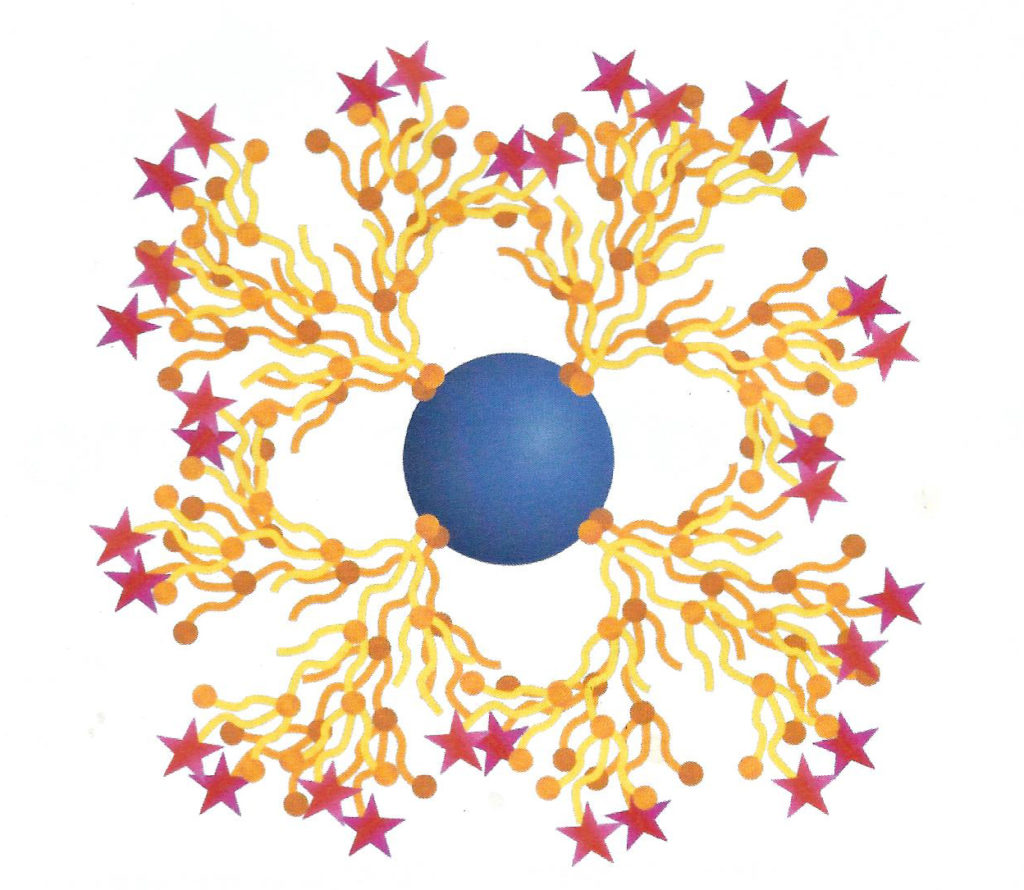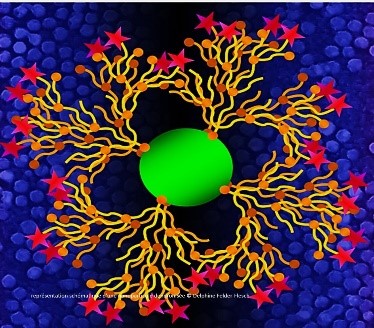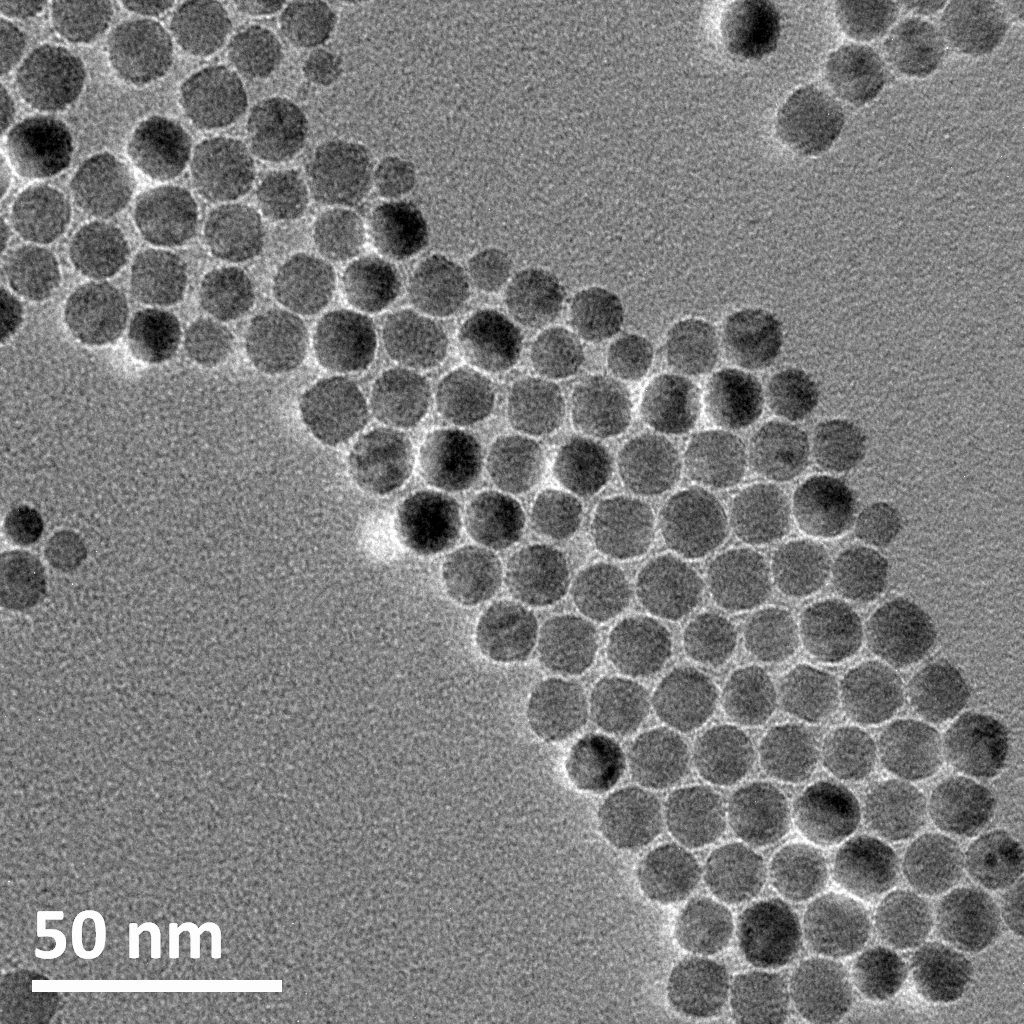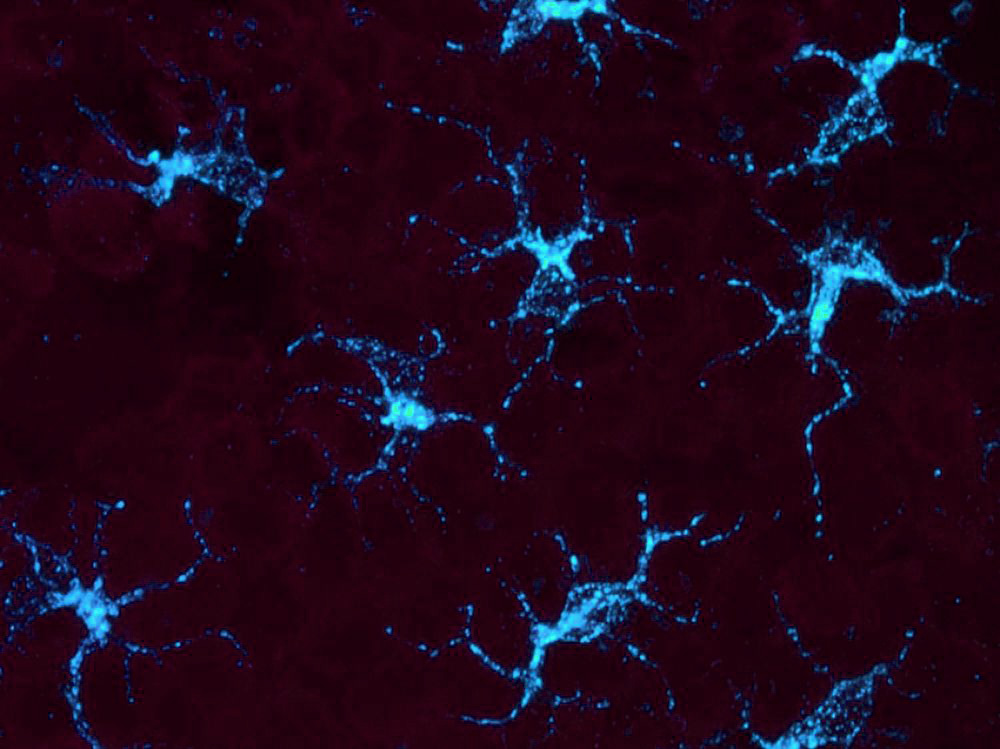OUR INNOVATION
OUR VISION
MAKE INNOVATIVE NANOMATERIALS ACCESSIBLE TO EVERYONE
OUR MISSION: link nanotechnologies to expand the treatment offer
SUPERBRANCHE’ innovation is based on a connection between different nanotechnologies in order to diversify the possibilities of solid cancer treatment. We exploit the potential of nanomaterials whose main interest is to exacerbate the active targeting of tumors for their early and specific detection while reducing side effects. SUPERBRANCHE is now positioned as a producer dedicated to the synthesis of nanotechnological materials for Nanomedicine. In the midterm, SUPERBRANCHE will also commercialize targeted therapeutic (radiotherapy, magnetic hyperthermia, radiosensitization) tools in oncology.
OUR AMBITION : HEAL PEOPLE
Our vision and ambition is to become a pharmaceutical company, to heal people, and to participate in the re-industrialization of the Grand Est Region in advanced nanotechnologies.
Nanoparticles conception

At the heart of our innovation: The design of nanoparticles for targeted diagnosis and therapy is of paramount importance in oncology to reduce side effects and lead to personalized medicine.
Such systems must meet a long list of criteria:
- these nanoparticles must be selectively directed towards the cells and organs of the body involved in the pathological process, in order to minimize side effects,
- they must be non-toxic, biodegradable or easily and quickly excreted,
- they must not be recognized or eliminated by the body’s immune system until they reach their target and must not cause allergic reactions,
Ideally, they are generic, that is, they are « programmable » to control a wide variety of diseases by docking to any chosen target structure and being able to transport any drug.

The design of inorganic nanoparticles is expanding rapidly mainly because of their remarkable optical, magnetic or electronic properties. Thus, their use is multiple, sometimes leading to the development of new fields of research because new properties appear at the « nano » scale. For example, in Nanomedicine, where nanoparticles enable the development of innovative diagnostic and/or therapeutic solutions, or even disruptive ones. For optimal efficiency in such a sector, nanoparticles must exhibit a number of properties, among which, first and foremost, good biocompatibility and optimal biodistribution. To achieve this, it is necessary to coat them with an organic shell that will also allow mastering the interactions with biological fluids.
In this way, dendrons perfectly meet the needs of nanomedicine. They are branch-shaped molecules, composed of an anchor/focal point and reactive ends, whose size and conformation can be finely controlled at the nanometre scale. Depending on the physico-chemical properties of their peripheral groups, dendrons can drastically reduce the main issues encountered in the development of diagnostic agents and therapeutic tools, such as aggregation and non-specific interactions, low biocompatibility, high toxicity or antigenicity.
The choice of the chemical functionality in the dendritic structure is strategic. Among the possible anchor points, phosphonic acids have strong affinities with metal oxides, ensuring a quasi-covalent bond on their surface. This interaction makes the hybrid nanomaterial formed (nanoparticle or implant) extremely stable in vivo while protecting it from oxidation and thus preserving, for example, the magnetic properties of the nanoparticles. At the opposite end, peripheral groups can also play an important role. Indeed, they can be coupled to bioactive molecules such as drugs, chromophores or targeting ligands, which then provide additional functionality to the dendron. Finally, the synthesis of dendrons, from generation to generation, allows to adapt it to the size of the grafted nanoparticle, thus minimizing the thickness of the organic shell and resulting in the smallest possible objects, which can be intravenously injected.
At Superbranche, we currently offer a range of dendrons, of different generations, meeting the needs of nanomedicine. Composed of a biphosphonic anchor point, they also display a carboxylic acid end to further functionalize them. We invite you to discover them in our « products » tab which will be implemented soon with other structures.

Over the past decades, lipids, polymers and metal-based nanoparticles have emerged in medicine to address new health challenges. Chemical composition, size, shape, morphology and magnetic behavior are the most important criteria for determining their applications in this field.
Metal oxide nanoparticles in particular are relevant both in diagnosis and therapy due to their original magnetic properties. When composed of iron oxide, these nanoparticles have been used thanks to their response to an external magnetic field and their biocompatibility: as a contrast agent for magnetic resonance imaging (MRI) or in therapy for the treatment of cancer by magnetic hyperthermia or controlled drug release. Such magnetic iron oxide nanoparticles have also applications in biosensing or cell separation.
But to be effective, iron oxide nanoparticles must answer a full set of criteria regarding their size, shape and morphology, which will condition their magnetic behavior and thus determine their possible applications.
In addition to size and composition, it is essential to design the surface of superparamagnetic iron oxides, not only to improve their biocompatibility and stability in physiological media but also their pharmacokinetics. Indeed, nanoparticles with a hydrodynamic diameter higher than 100 nm are captured by immune cells, reducing their availability in blood flow and tissues. In contrast, nanoparticles between 10 and 100 nm have a high circulating time in the bloodstream, giving them a high potential for systemic therapies by maximizing the possibility of reaching the target tissue.
Nanoparticle coatings are more and more developed to provide additional bioactive functions, ensuring targeting and combination therapy (drug encapsulated in the nanoparticle coating). Dendritic architectures in particular are ideal coatings because of their defined structure and composition, as well as their highly adjustable surface chemistry. For more information on this subject, we invite you to read our dedicated article: « Nanoparticle coating, a key architecture ».
At Superbranche, we currently offer two ranges of iron oxide nanoparticles: dendronized (which can be functionalized with several biologically relevant molecules) or not. They are spherical and small-sized (10 or 20 nm), answering the current needs of nanomedicine, whether in diagnosis or therapy. Intravenously injectable and water soluble, they can be used as a contrast agent for MRI (10 & 20 nm), as a tracer for Magnetic Particle Imaging (20 nm) or as a magnetic hyperthermia therapy agent (20 nm). To discover them, we invite you to visit our « products » tab.
OUR INNOVATION
What is our innovation about?
By their simplicity and controlled size, our nanoparticles for MRI or MPI diagnosis and hyperthermia or radiosensitization therapy can be injected intravenously unlike those developed by our main competitors which can only be injected into or near the tumor and which target the tumor in a passive way. The capacity of being injected intravenously set the stage to active targeting, early diagnosis of cancer spreading (micrometastases or circulating tumor cells detection) and so to an early stage therapy.
Furthermore, the architecture and design of our dendritic nanoproducts make them sturdy in biological media and reluctant to adsorb plasmatic proteins.
Finally, our compounds combine diagnosis properties through different medical imaging methods (MRI, MPI) to therapeutic attributes (magnetic hyperthermia, radiosensitization) : A single injected compound will be able to ensure both diagnosis and therapy, thus simplifying image-guided therapy.

SUPERBRANCHE in video (in French)
Find SuperBranche on its YouTube page
Delphine Felder-Flesch
VIDEO of the Grand Prix i-Lab 2019, Superbranche as a National innovation contest winner
Geoffrey Cotin
Strasbourg University
My thesis in 180 seconds
To know more about SUPERBRANCHE’ history and team, please go to the ABOUT US tab
